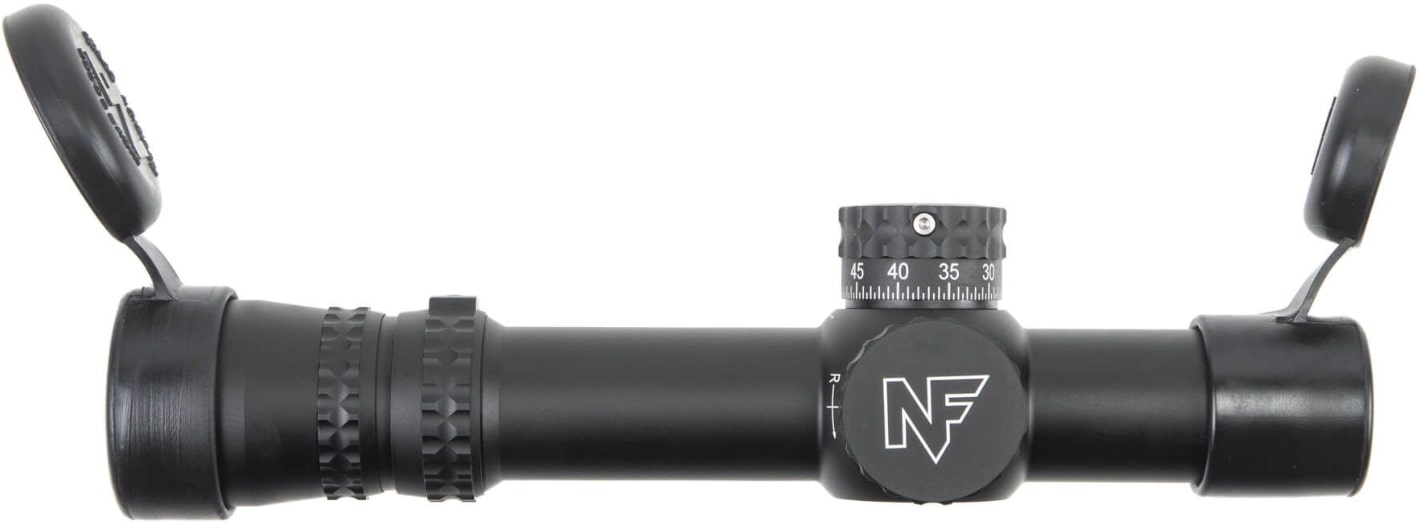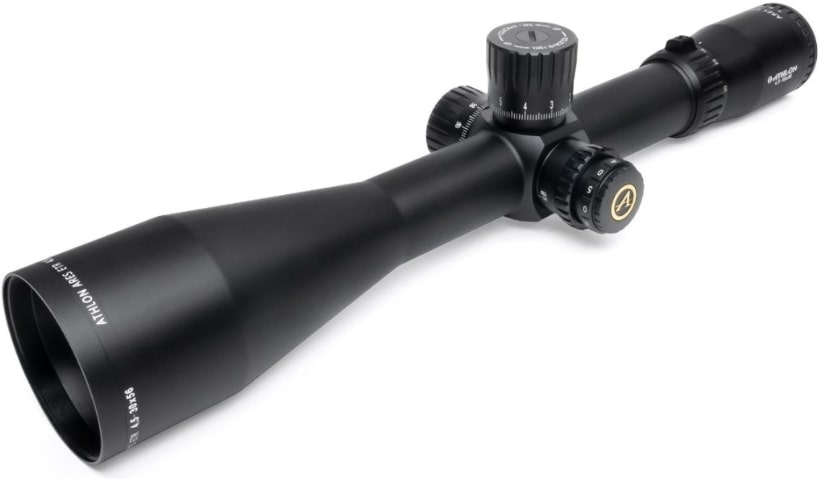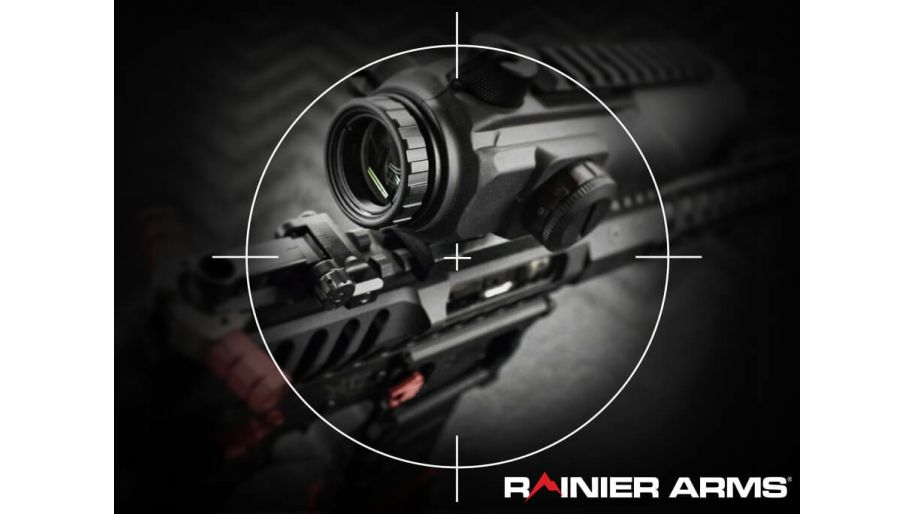Choosing the Best AR15 Scopes Guide
As already known, the AR15 rifle is highly customizable, making it one of the most popular firearms among US citizens.
You can customize whichever part you want or make a unique combination of parts that will later represent your signature weapon. Almost like in video games.
Well, except by modifying any part of the AR15, you can add additional features like slings and holsters, flashlights, and of course scopes and optics.
If you’re a long-range shooter, you will probably need a long-range scope for your rifle. Especially if you’re a hunter.
Let’s explain how you can choose the next long-range scope and list a few of them you can buy.
Table of contents:
- What is Rifle Scope
- How to Choose Rifle Scope
- Magnification
- Reticle
- Lens size
- First focal plane vs second focal plane
- Scope turrets
- Mounting compatibility
- Price
- Best AR15 Scopes
- Conclusion
What is Rifle Scope
A rifle scope, long-range scope, or magnified scope is an optical sight you can use for long-distant targets especially if you go hunting.
But you’re not the only one as they are popular among law enforcement, military, and target shooters too.
Long-range scopes are known for their magnification and ability to adjust for bullet drop and windage which allows you to accurately engage targets at long distances. Depending on the model you choose, you can also zoom for 4-16x or 6-24x to adjust it for different ranges.
The rifle scope has a reticle or crosshair that comes with additional features. For example, these reticles can have bullet drop compensation (BDC) marks, windage compensation, range estimation, and many other features to help you in long-range shooting.
Also, you can find some scopes with illuminated reticles for better visibility at night, for example.
How to Choose Rifle Scope
Of course, when choosing a rifle scope, there are various factors to include as probably you as a shooter have your own list of preferences.
Let’s explore a little bit in detail those factors to help you next time in the selection process.
Magnification
Not all rifle scopes have the same magnification levels. For example, there are those with lower and higher magnification.
Higher magnification scopes are great for extended distances, but their field of view is narrow.
On the other hand, lower magnification has a wide field of view but is more limited in terms of zooming in.
Third, and in our honest opinion, are the best choice - variable magnification scopes. They offer adaptability of the zoom which can be used for various shooting distances.
Reticle
First, what is a reticle? The reticle is a little cross (the most basic one, there are lots of variations) you use when you aim through your scope.
It’s used to show you where your bullet will be (or where it should be at least). There are many variations as we already said which are made to help you better calculate where you should aim.
As for the types of reticles, popular options include duplex, mildot, BDC (bullet drop compensation), or illuminated reticles.
Duplex reticle
This is the simplest and most used reticle design. It has two thin tapered lines that form a crosshair shape.
The center intersection is thinner which helps in quick target acquisition.
Mildot Reticle
Mildot reticles have evenly spaced dots along the vertical and horizontal lines of the crosshair.
These dots are calibrated in milliradians and allow for range estimation, holdovers, and windage adjustments. These dots help you estimate range and compensate for bullet drop by comparing the size of the dots to the target.
DBC (Bullet Drop Compensation)
This one is made to simplify bullet drop compensation as it has aiming points or hash marks below the center crosshair which correspond to specific ranges.
When aiming, you can choose the appropriate aiming point based on the estimated range to compensate for bullet drop without adjusting the turrets.
Illuminated reticle
This reticle incorporates an internal light source, usually in the form of an LED, to improve visibility in low-light conditions.
The illumination is added to the crosshair allowing for better aiming in low-light conditions. The illumination is usually adjustable.
Horus reticle
These reticles are advanced and are mostly used in long-range precision shooting or in tactical applications.
They have grid-like patterns with multiple hash marks, dots, and numerical references. Horus reticles provide detailed information about windage compensation, range estimation, and holdovers for fast and precise aiming in dynamic shooting scenes.
Lens size
The lens size refers to the objective lens that’s facing the target. There are a few aspects in which lens size affects the scope.
Light transmission
The lens size directly affects the amount of light entering the scope. A larger objective allows more light to pass through giving you a brighter image.
This is a huge benefit if you’re shooting in low-light conditions.
Exit pupil
The exit pupil is part of the objective closer to your eye. To create exit pupils, the objective lens diameter is divided by the magnification level. This is how lens size affects the exit pupil.
Of course, a larger exit pupil is great for low-light scenarios.
Generally speaking, larger objective lens results in a larger exit pupil size.
Field of view
FOV or field of view is a visible area you see when looking through the scope at a given magnification level.
If you’re shooting at fast-moving targets, a larger field of view should be in your focus when choosing the scope.
Weight and size
Compared to other sights you can use on your AR15 rifle, long-range scopes are pretty heavy.
However, if we take a look at scopes only, then lens size is the part that contributes the most to the weight and size of the scope.
If weight is not something you’re worried about, then cool, you surely have more choices in front of you.
First Focal Plane vs Second Focal Plane
First, let’s define what are First Focal Plane and Second Focal Plane. All the time we have customers looking at optics for their guns. One of the biggest questions we get asked is what we would recommend for a rifle when they want to go with an LPVO (low-power variable optic).
On top of all the brands, it can be intimidating to also have to make decisions of a range of magnification, price, size, and weight. Most people with all of that going on don’t realize that there is one other huge factor that they need to decide on as well. That factor is First Focal Plane (FFP) and Second Focal Plane (SFP).
Most of the time the only scope anyone has looked through has always been SFP, FFP has become more and more available as more companies offer the option. Vortex has been innovative in its designs and options and offers the FFP option in various optics.
Let's get into it, on the option of SFP the glass that has your etched reticle is in the rear of the Optic after the erectors. The option of FFP is in front of the erectors in the tube. This makes it so that when you zoom in on FFP the reticle also gets bigger. With most scopes that means that they have now been able to add very fine detail to the reticle that allows for you to get an amazing amount of ballistic data as you zoom.
With this data, you can make quick adjustments to take farther shots. Another other upside to FFP is that as you zoom your holdovers never change. When you adjust your magnification on SFP the holdover on target changes with each magnification.
When you look at the illustration below this shows how holdovers change with increased magnification. They are all at 300 yards with a 20mph crosswind on a Vortex Strike eagle 1-6. They are at 1x, 3x, and 6x magnification.
A very big piece of information that needs to be addressed on FFP Scopes is that because of where the glass is located you must be very and I cannot stress this enough VERY careful not to over torque your scope rings you run the risk of the class being in the same location as a ring and if you over tighten them you can break the glass internally. Most optics companies will not warranty the issue if it's due to you being careless also. So refer to your installation instructions or have a licensed gunsmith help you out.
I hope that you have found some of this information useful and that it will help when making decisions on new optics for your setups. There is also a video on YouTube that explains this in detail which may help as well.
Scope turrets
Scope turrets are those nifty little knobs on your rifle scope that let you make precise adjustments for windage (left-to-right) and elevation (up-and-down) alignment.
They're important for helping you compensate for things like bullet drop and wind drift.
There are a couple of types of turrets you'll come across.
Exposed turrets are the ones you can see and easily access. They're often found in tactical or long-range scopes, designed for quick adjustments with audible and tactile clicks.
On the other hand, capped turrets have protective caps covering them. They're more commonly seen in hunting scopes, keeping things sleek and safeguarded against accidental changes.
When you're twisting those turrets, they're calibrated in units of measurement like minutes of angle (MOA) or milliradians (mil). Each click you hear and feel represents a specific angular adjustment, so you can fine-tune your aim precisely.
One turret handles the horizontal adjustments (windage), while the other takes care of the vertical adjustments (elevation). That way, you can move your reticle left or right and up or down to hit your target spot-on.
Some scopes have zero-reset or zero-stop turrets. Zero-reset turrets let you quickly go back to your starting zero point after making adjustments, no more second-guessing or counting clicks. With zero-stop turrets, they physically stop at the zero point to prevent any accidental over-adjustment.
So, when you're picking a scope, pay attention to the quality of the turrets. Look for ones that give you precise and repeatable adjustments, with nice, audible clicks. That way, you can have confidence in your ability to fine-tune your shots.
Mounting compatibility
So, when we talk about mounting compatibility, we're considering whether the scope can be properly mounted on your AR15. You want to make sure they're a good fit, just like puzzle pieces that lock together smoothly.
AR15 rifles typically use a Picatinny or M-Lok rail system for attaching accessories, including scopes. These systems have specific slots or grooves that allow you to mount your scope securely.
When choosing a scope, you'll want to ensure it has the right type of mounting system that matches your rifle's rail. Some scopes come with built-in Picatinny or M-Lok mounts, making it super easy to attach them directly to your AR15 without needing any additional mounting accessories.
If the scope you're eyeing doesn't have a built-in mount, no worries! You can purchase separate scope rings or mounts that are compatible with your rifle's rail system. Just make sure to check the specifications and ensure they match up with your rifle and scope.
Price
Finally, we came to the factor that can play an important role in almost every purchase - price.
When it comes to rifle scopes, well, there are models that are kind of cheaper, however, if you’re planning to buy a rifle scope, even one from the middle class so to say, be ready to spend more money.
For example, they come from a couple of hundred dollars per piece and up to over one thousand dollars for one scope only.
Best AR15 Scopes
- Vortex Strike Eagle 1-6x24 Riflescope
- Nightforce NX8 1-8x24 F1 Rifle Scope
- Atibal 3-12x44 Atibal Nomad with V-Plex BDC Reticle
- Sig Sauer Tango6T 1-6x24mm FFP Riflescope
- Athlon Optics Ares ETR UHD 4.5-30X56 APRS6 MIL Riflescope
Vortex Strike Eagle 1-6x24 Riflescope

The Strike Eagle is a quick-handling scope that offers a magnification range of 1-6x. With adjustable magnification, you can aim at your targets at different distances.
It features an illuminated and glass-etched reticle for more precise aiming, holdover, and ranging references from 0 to 600 yards.
The 1 MOA center dot and 18 MOA horseshoe surrounding it will help you in rapid target acquisition.
Strike Eagle is tuned for the ballistic performance of 5.56 NATO ammo, ensuring accuracy up to 650 yards.
The optic has fully multi-coated lenses that increase light transmission and its glass-etched reticle is protected between layers of glass for durability. The exterior lenses are coated with hard and scratch-resistant ArmorTek coating while the rugged construction is shockproof.
The scope has a single-piece tube and it’s made from aircraft-grade aluminum. Additional features you’ll love are a fast-focus eyepiece for quick reticle focusing and a throw lever for easy magnification adjustments.
As for ergonomics, the objective lens has a 24mm diameter, 3.5 inches of eye relief, and a total of 10.5 inches in length.
Price: $399.99
Check offer!
Nightforce NX8 1-8x24 F1 Rifle Scope

The NX8 is a compact and lightweight rifle scope made for short to mid-range shooting. It’s 8.75” long and weighs only 17 ounces. This scope won’t add too much weight to your rifle.
The scope has daylight visible center red dot which allows faster target engagement similar to a red-dot sight. However, as targets increase in distance, the FC-Mil and FC-MOA first focal plane reticles provide prices hold points.
If you’re one of those who prefer dialing for long sorts, there are the ZeroStop elevation adjustments and a reliable return to zero.
The Power Throw Lever is also included, for quick magnification adjustments.
Key parts of the NX8 is a magnification range of 1-8x.
The parallax adjustment is fixed at 125m, while the eye relief measures 3.7 inches. The field of view is 100 yards/m and ranges from 106.0 ft/35.3 m at 1x magnification to 13.2 ft/4.4 m at 8x magnification.
However, the scope is a little bit costly with the price starting at $1,750.
Price: $1,750
Check offer!
Atibal 3-12x44 Atibal Nomad with V-Plex BDC Reticle

The Nomad 3-12x44 comes with dual illumination in red and green colors. You can also try side focus and have long eye relief.
Key features include a simple and uncluttered illuminated V-Plex (Vortex duplex reticle - four thick crosshairs reduced to thin ones at the middle) reticle with a BDC (bullet drop compensator).
You can change illumination to 10 different brightness settings - 5 for red and 5 for green. The multi-coated lens gives you a minimum of 85% light transmission for better clarity.
For the build itself, Nomad is made to withstand rigorous use - it’s waterproof, shockproof, and fog-proof making it ideal for all situations.
Nomad includes an adjustable magnification range of 3-12x.
Length of 12.79", and a 44mm objective lens diameter. The eye relief measures 4 inches while the field of view ranges from 33.6 to 8.2 ft.
Price: $238.00
Check offer!
Sig Sauer Tango6T 1-6x24mm FFP Riflescope

The Tango6T scope is used by US Army and Special Forces but now is finally available for civilian shooters too.
The Tango6T comes with HDX optics with low dispersion glass and high transmittance glass that gives you a clear view and perform really well in low-light conditions. Plus, it comes with illuminated reticles that use fiber optics and glass etching.
This scope has a bunch of features that make it easy to use. It has a fast-focus eyepiece so you can quickly get your reticle in focus, and there's a locking illumination dial that lets you set the brightness level and even use it with night vision goggles. It also has a laser-engraved mounting line to help you align it with your scope rings.
TANGO6T comes with a power selector ring throw lever to make it even easier to adjust the magnification settings.
It's a first focal plane scope with a 5.56/7.62 Horseshoe Dot reticle. You can make adjustments in increments of 0.2 MRAD. It weighs 22.1 ounces and has a 30mm main tube diameter. The field of view varies from 105.8 feet to 17.7 feet depending on the magnification.
Eye relief ranges from 3.9 inches to 4.1 inches, and the exit pupil size goes from 11.4mm to 4mm. You can adjust the diopter range by +/- 2.5. It's also got 9 daylight and 2-night vision illumination settings.
Price: $1,439.99
Check offer!
Athlon Optics Ares ETR UHD 4.5-30X56 APRS6 MIL Riflescope

One of the standout features of Ares ETR is the locking windage turret so you don't have to worry about accidentally messing up your adjustments while you're out in the field. Also, the precision zero stop helps you get back to zero, which means your shots will be right on target every single time.
Now, let's talk about the optics. Ares ETR has Extra-Low Dispersion lenses that give you super sharp and vibrant images. Even in low-light conditions, you'll still get a clear view thanks to the advanced fully multi-coated lenses.
When it comes to toughness, the Ares ETR is built with a one-piece tube made from aircraft-grade aluminum. That means it can handle some serious abuse. Plus, it's waterproof, fog-proof, and shockproof - perfect for any weather conditions or tough shooting situations.
The Ares ETR has a magnification range from 4.5x all the way up to a whopping 30x!
The objective lens diameter is 56mm, and the tube diameter is a solid 34mm. You'll have a nice and comfortable eye relief of 3.9 inches, and the field of view at 100 yards ranges from 24.5 to 3.75 feet.
The length of Ares ETR is 15.3 inches, with a weight of 36.5 ounces.
Price: $1,249.99
Check offer!
Conclusion
If you’ve come this far - congratulations. You really want to know as much as possible about scopes.
And by now, you can probably choose it better.
Scopes are a great addition to your AR15 rifle if you’re looking forward to using your rifle in long-range shooting or hunting for example.
Of course, you can use it whenever you want, these are just the best scenarios for using such kind of optics.
Additional Reading
...









